Reports
Pakistan’s Chashma Plutonium Separation Plant: Possibly Operational
by By David Albright and Serena Kelleher-Vergantini
February 20, 2015
Pakistan has built four reactors at Khushab to produce plutonium for its nuclear weapons. However, to use this plutonium in nuclear weapons, Pakistan must chemically separate it from the irradiated reactor fuel, a difficult process done in special buildings called plutonium separation or “reprocessing” plants. Faced with a lack of technical capability, Pakistan sought to buy a reprocessing plant from France in the mid-1970s. Because of concerns about the plant’s potential use to make nuclear weapons, France cancelled its contract to provide a reprocessing plant to Pakistan. Several years later, Pakistan finished a small one near Rawalpindi on its own. This small plant became the location for separating plutonium for nuclear weapons after Pakistan brought into operation its first Khushab reactor in 1998. During the last several years, it has started three more Khushab reactors and the Rawalpindi separation plant may not be large enough to process all the irradiated fuel. As a result, Pakistan is believed to have secretly finished the Chashma plutonium separation plant in order to separate the relatively large amount of plutonium produced in all four reactors. The original reprocessing site is believed to be adjacent to the Chashma Nuclear Power Complex, located 270 kilometers south-west of Islamabad. The operational status of this reprocessing plant is unknown, although satellite imagery signatures suggest it may have recently become operational. Bringing into operation this reprocessing facility would significantly increase Pakistan’s plutonium separation capability and ability to make nuclear weapons.
Developing a Plutonium-Separation Capability
Pakistani efforts to build a plutonium separation plant started in the early 1970s, when it started soliciting European firms for bids to build a reprocessing plant. In 1973/1974, France agreed to supply this first reprocessing plant but ended the contract in 1978 following strong U.S. government objections that the plant could contribute to Pakistan’s nuclear weapons program.1 Pakistan stated that the plant would reprocess irradiated fuel from its safeguarded heavy water, natural uranium fuelled nuclear power reactor in Karachi, known by its acronym KANUPP. This reactor was producing approximately 100 tons of spent fuel per year and the reprocessing plant was sized to process 100 tonnes of natural uranium fuel per year.2 At the time, KANUPP was Pakistan’s only reactor producing significant amounts of plutonium. However, faced with growing concerns that the plutonium separation plant would contribute to Pakistan’s effort to make nuclear weapons, France reneged on the contract long before the plant was completed.
By 1978, when the contract was cancelled, Pakistan was building the main reprocessing building, although no major plutonium-separation equipment had yet been supplied or installed inside the building. Pakistan’s efforts to find another supplier failed. One person, whose company was approached to finish the plant, saw the inside of the main building at the time and described it as being in a state of ruin and far from complete.3 The partially completed buildings remained dormant for many years.
In the meantime, Pakistan started building a smaller plutonium separation plant, called the New Labs facility, at PINSTECH located at Rawalpindi, near Islamabad. This facility had a capacity of about one-tenth that of the unfinished plutonium separation plant. Nonetheless, New Labs was capable of separating the plutonium from the irradiated nuclear fuel produced at the first Khushab heavy water reactor which went critical in April 1998 and has a power roughly one-tenth that of KANUPP.
In the early 2000s, Pakistan started building additional Khushab reactors, adding three reactors in total. In the 2000s, Pakistan added a new building at New Labs, which appears also to be for plutonium separation and to have at least doubled the site’s annual capacity to process spent fuel. But the New Labs facility is not believed to be large enough to handle all the irradiated fuel from the four Khushab reactors, which have become operational in the last several years.4 As a result, Pakistan is believed to have resumed construction of the old reprocessing plant at Chashma more than a decade ago. Although it must build this plant on its own, Pakistan likely has depended on illegal procurements from abroad to obtain all the equipment, materials, and know-how to build the plant.
Pakistan was helped in this effort by the original French contracts. By the time France cancelled the contracts in 1978, the French company had already transferred to Pakistan a substantial amount of design information for the plant. This technical information formed the basis for construction to resume many years later, supplemented by many overseas illegal procurements and possibly with secret aid from China.5
Chashma Plutonium Separation Plant
In 2007, ISIS located a tall building in a site southwest of the Chashma Nuclear Power Complex, which is the location of Chinese-supplied nuclear power reactors. The site had experienced a large amount of renewed construction after 2000, when it appeared largely overgrown, without any construction activity. Between 2002 and 2005, a considerable amount of construction had taken place at this adjacent site. A pond was excavated and filled, roads were created and subsequently paved, new buildings were constructed and other areas were cleared.
The 2007 ISIS report assessed that this tall building could be the original Chashma plutonium separation plant.6 Subsequently, the Pakistani government provided no confirmation that this site houses a plutonium separation plant. However, this tall building is increasingly assessed as a plutonium separation plant. Moreover, Chashma is accepted publicly as a location of a plutonium separation plant, including by a former Pakistani official.7 The tall building at the Chashma site is the best candidate for this plant.
This building has several signatures that suggest a plutonium separation plant. The building is windowless and appears to be made out of concrete. It has a tall stack adjacent to the building, which could be for the expulsion of fission product gases resulting from chemical processes, for example radioactive iodine and noble gases. Second, two of three rail lines nearby led directly into this the large building. In 2007, ISIS noted that these two rail lines, which appeared defunct because portions of the track were missing, may have been intended to transport spent fuel from the KANUPP reactor in Karachi to this building.8 Third, imagery from 2002 shows a series of trenches indicating the movement of liquids (potentially liquid radioactive waste) between buildings through underground pipes. However, in 2005 most of these trenches had been covered.9
In 2010, ISIS highlighted that construction activity appeared to be continuing in this section of the site. More recent imagery (figures 2 and 3) shows that a large size building with a stack has been built to the east of the main large building, possibly a waste handling facility. The three railroad lines are still visible and so are the pools (which are full of liquid). New areas have been cleared to the north, and one new auxiliary building and two foundations for possible new buildings were constructed south of the main building. Another noticeable change compared to previous imagery relates to the security of the facility: a second security perimeter has been added (surrounding the first one).
In conclusion, the large size and details of the two main buildings, the physical security, the continued presence of at least one rail line leading up to the main building, the adjacent tall stacks beside both buildings, and the past system of trenches among the buildings are all signatures of a reprocessing facility. However, other signatures of a reprocessing facility (thick wall shielding and individual cells inside the building) could not be seen because the imagery available to ISIS covers the period after the roof was placed on the tall building. The operational status of this likely plutonium separation plant is unclear in the recent imagery. However, the buildings look increasingly completed externally, suggesting it could potentially be operational or ready for operation.
Chashma Nuclear Power Reactors
The site is also the location of the Chashma Nuclear Power Complex. This site holds four safeguarded nuclear power plants supplied by China, known as Chasnupp 1, 2, 3, and 4.
Two reactors are operational and the other two are under construction. Between March 2010 and August 2011 Pakistan initiated the construction of Chasnupp 3 and 4 east of the first two reactors (left side in figure 4).
By December 2013, the reactor roof had been placed on Chasnupp 3, while the roof of the Chasnupp 4 reactor building remained on the ground near the reactor. As of February 2015, Chasnupp 3 appears externally complete. Also Chasnupp 4’s reactor roof has been applied but external construction is still ongoing. The layout of the four reactors is very similar.
Nearby is also the Kundian fuel fabrication facility. This facility has made fuel for the Karachi nuclear power plant, called by its acronym KANUPP (see figure 1).
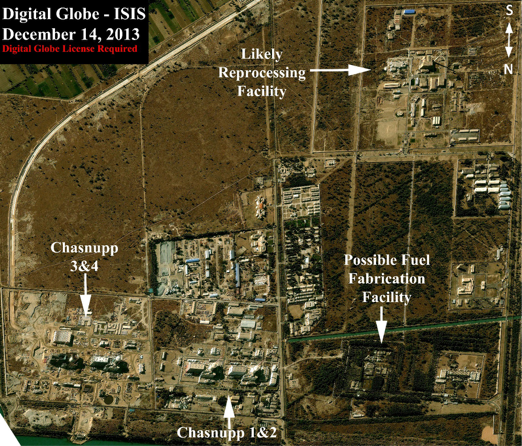

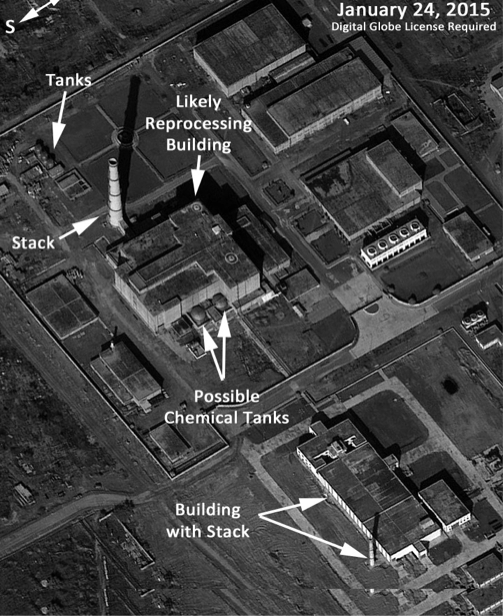

1 Feroz Hassan Khan, Eating Grass: The Making of the Pakistani Bomb (Stanford: Stanford Security Studies, 2012). 2 David Albright and Paul Brannan, Chashma Nuclear Site in Pakistan with Possible Reprocessing Plant, ISIS Report, January 18, 2007, http://isis-online.org/uploads/isis-reports/documents/chashma.pdf. 3 Albright, Peddling Peril (New York: Free Press, 2010), p. 55. 4 The last of the four Khushab reactors just recently became operational. See David Albright and Serena Kelleher-Vergantini, Pakistan’s Fourth Reactor at Khushab Now Appears Operational, ISIS Imagery Brief, January 16, 2015, http://isis-online.org/isis-reports/detail/pakistans-fourth-reactor-at-khushab-now-appears-operational/. 5 David Albright and Paul Brannan, Chashma Nuclear Site in Pakistan with Possible Reprocessing Plant, ISIS Report, January 18, 2007, http://isis-online.org/uploads/isis-reports/documents/chashma.pdf. 6 This building is present in all commercial imagery available to ISIS starting from the year 2000 and has not undergone any substantial external modification over the years. 7 See for example, Feroz Khan, Eating Grass, op. cit. 8 The two defunct tracks may have been removed as a result of the cancellation of the original French reprocessing deal or in anticipation of the construction of newer, closer heavy water reactors. See Albright and Brannan (op. cit). 9 Chashma Nuclear Site in Pakistan with Possible Reprocessing Plant, op. cit.

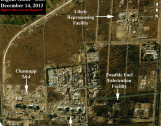
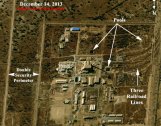

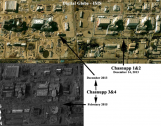
 twitter
twitter